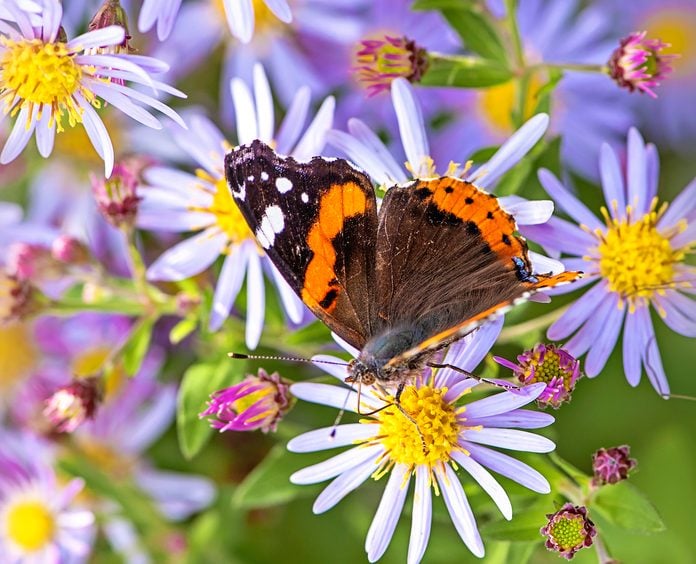
1. Native Plants: Wild Aster
Symphyotrichum spp., Zones 3 to 9
The world of native asters is a big one, with dozens of species that come mostly in shades of blue-purple. All are irresistible to butterflies, native bees, honeybees and a variety of other insect visitors. Heart-leaved, blue wood, smooth, New England, and white heath aster are adaptable and easy to care for. Research the best native plants for your area.
Why we love it: Aster shrugs off light frost and keeps the pollinators coming back for more.
Here’s how to grow a pollinator garden.
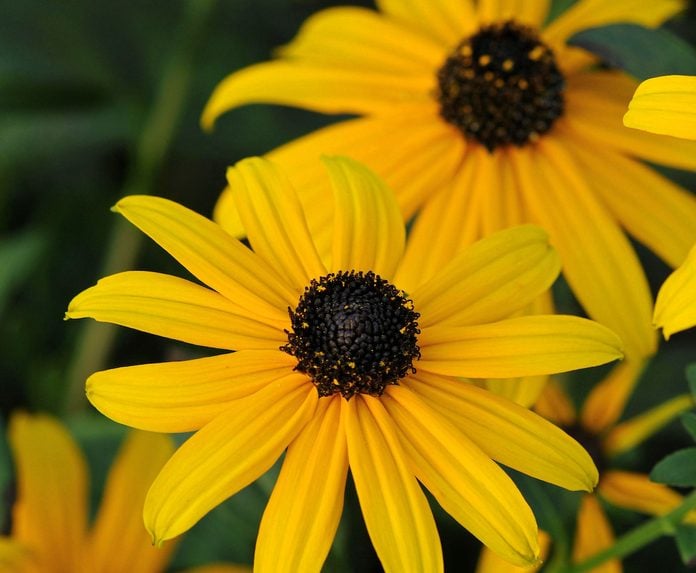
2. Native Plants: Orange Coneflower
Rudbeckia fulgida, Zones 3 to 9
A long-blooming eastern native plant, orange coneflower is easy to recognize. Try out the cultivar Little Goldstar. Its blooms sprout from gorgeous dark green foliage. At about 16 inches tall, coneflowers beckon butterflies from summer to fall and the seeds are a treat for birds in fall and winter, or as long as they last.
Why we love it: The bright color and long bloom time make this coneflower a standout.
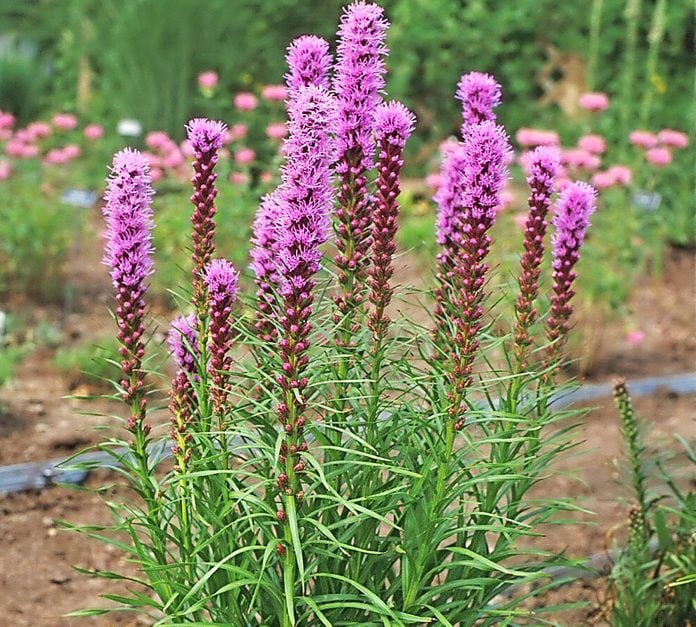
3. Native Plants: Dense Blazing Star
Liatris spicata, Zones 3 to 9
Showy in both color and form, the fuzzy wands of this eastern species stand 3 to 5 feet on tufts of grasslike leaves. It grows in moist meadows or near marshes, but it flourishes in average garden soil, too.
Why we love it: Blazing star brings in big butterflies! It’s a magnet for monarchs and tiger swallowtails or crowds of red admirals, painted ladies and sulphurs.
Psst—don’t forget about butterfly host plants to attract pollinators.
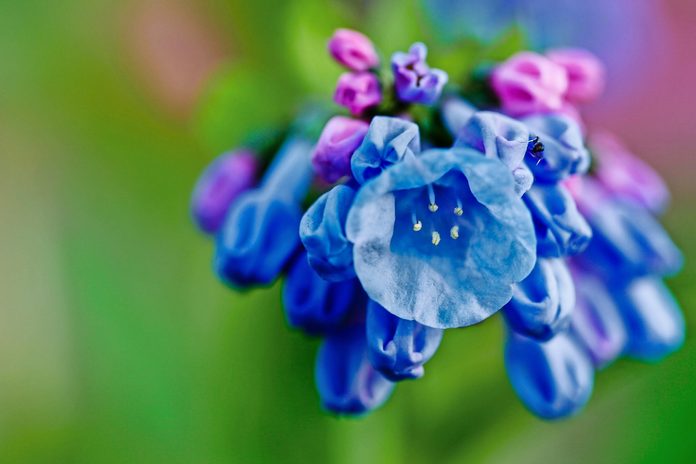
4. Native Plants: Virginia Bluebells
Mertensia virginica, Zones 3 to 9
This spring wildflower of the East and Midwest makes a perfect companion for daffodils and hostas, then dies back until next spring. Plant in humus-rich moist soil in sun to shade, where it will self-sow into a colony.
Why we love it: Its beauty would be reason enough, but this bloom is also a reliable nectar source for bees and other early spring pollinators.
No green thumb? Check out these easy flowers that anyone can grow.
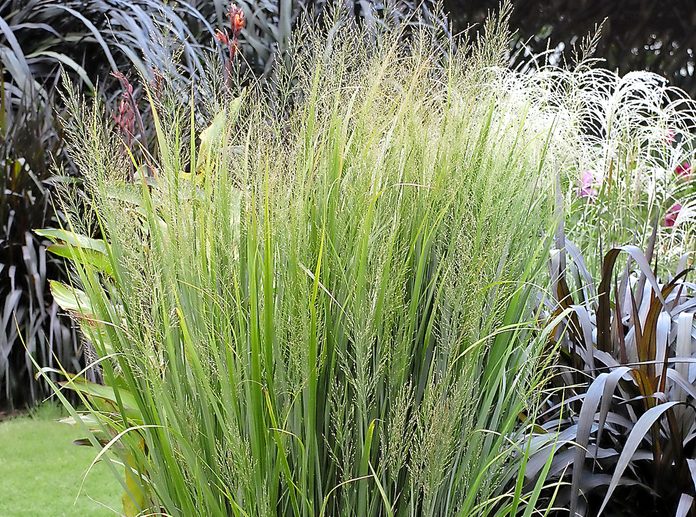
5. Native Plants: Switchgrass
Panicum virgatum, Zones 3 to 9
Try a metallic blue variety of this Midwest prairie native, like Heavy Metal Blue. Some types even boast red foliage in summer or fall. The dense clump of grass is topped by feathery seed heads in fall, with most plants reaching about 3 to 6 feet in bloom. It reseeds readily, so buy from a regional source.
Why we love it: Its vertical posture adds oomph to perennial beds with relaxed shapes.
Check out late-blooming fall flowers that attract butterflies.
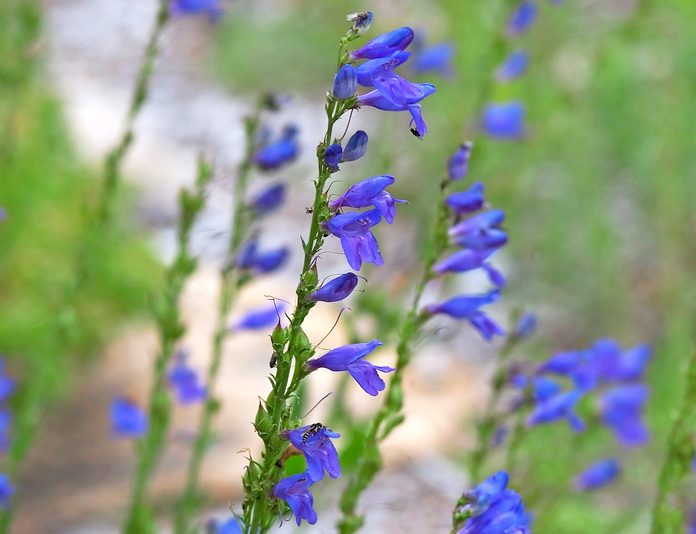
6. Native Plants: Rocky Mountain Penstemon
Penstemon strictus, Zones 4 to 9
Possibly the easiest penstemon to grow, this Mountain West native spreads into a 2- to 3-foot mat in sun to part shade and dry soil. Flower stems arise in late spring and last into summer, with foliage persisting through the winter.
Why we love it: Bumblebees often crawl right into the plant’s blossoms to drink nectar or to sleep, leaving their hind ends sticking out.
Check out blooming bushes that attract butterflies.
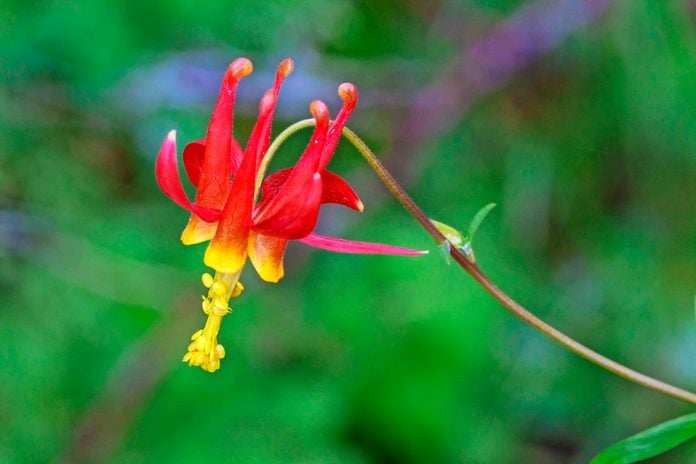
7. Native Plants: Wild Red Columbine
Aquilegia canadensis, Zones 3 to 8
This 2- to 3-foot-tall plant from the East is a “This way!” sign for migrating hummingbirds. As spring moves north, ruby-throated hummers follow the red and yellow flowers of this nectar-rich perennial like hounds on a trail. The similar western version, A. formosa, is just as gratifying to grow.
Why we love it: Red columbine keeps blooming for months if you snip off the faded flowers.
Bonus: Discover more red flowers to grow for hummingbirds.
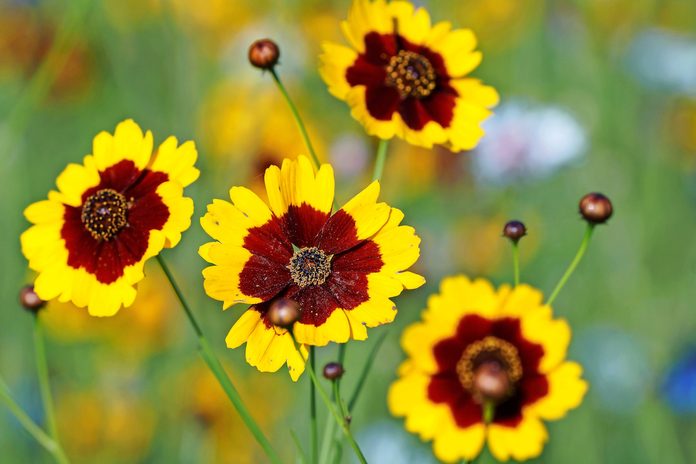
8. Native Plants: Plains Coreopsis
Coreopsis tinctoria, Annual
The small bright flowers pack a big punch. This summer-through-fall bloomer—native to the Plains in the central U.S.—is as easy to grow from seed as blue bachelor’s button, which makes a beautiful companion. Research before you plant, as it can be invasive.
Why we love it: Native sparrows, juncos, goldfinches and other birds seek out the flower’s seeds.
Check out the best classic yellow flowers to grow.
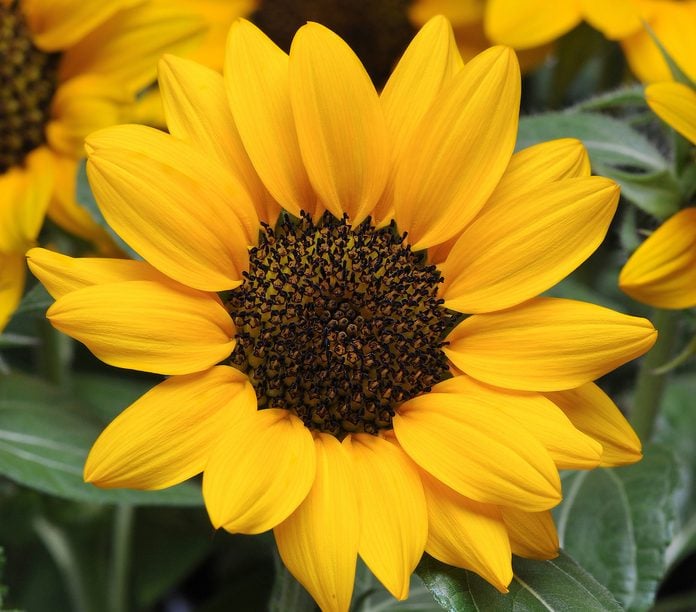
9. Native Plants: Sunflower
Helianthus spp., Zones 3 to 9 or Annual
Despite cultivar names like Russian Mammoth, all sunflowers have American roots. About 70 species, both annual and perennial, are native from Canada into Mexico. Common sunflowers are easy to grow from seed, reaching up to 10 feet tall.
Why we love it: Each bloom becomes a living bird feeder for chickadees, titmice, cardinals and others in late summer.
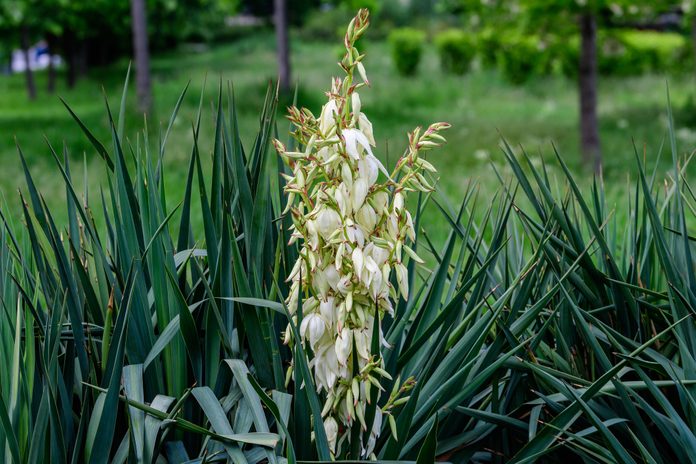
10. Native Plants: Adam’s Needle Yucca
Yucca filamentosa, Zones 4 to 10
Plant this southeastern eye-catcher in sun to part shade where you won’t accidentally brush against its needle tips (yee-ouch!). It lives for decades, putting out pups to expand its 2-foot-tall clump of evergreen leaves. Flower stalks may reach 8 feet tall.
Why we love it: This yucca brings the drama, creating a powerful focal point with flower stalks on a spiky clump.
